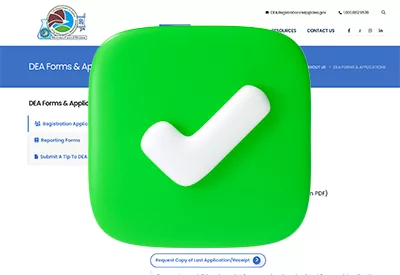Advance Directives: Guiding Patients Toward Dignity and Autonomy

Anasheh Nazarian, RN. Behavioral Health Nurse Educator, Olive View-UCLA Medical Center, Los Angeles, CA.
Victoria Hendrick, MD. Chief, Inpatient Psychiatry, Olive View-UCLA Medical Center; Editor-in-Chief, The Carlat Hospital Report.
Ms. Nazarian and Dr. Hendrick have no financial relationships with companies related to this material.
Mr. Patel, a 67-year-old man with advanced heart failure, is admitted to the hospital after experiencing worsening shortness of breath. When his physician brings up advance directives (ADs), Mr. Patel shifts uncomfortably and says, “I don’t want to talk about that—I’m not giving up. What I really need is to get my breathing under control.” His care team notices a pattern: Whenever treatment decisions arise, he steers the conversation toward his medications or discharge plans, avoiding discussions about his preferences for future medical care.
ADs play an important role in patient care, but talking about them isn’t always easy, as many individuals have fears and misconceptions about them that can make these conversations uncomfortable. While ADs are often associated with end-of-life planning, they also shape decisions long before the final stages of illness. Here we explore how ADs function, when psychiatry may be involved, and how to approach these discussions effectively.
What are ADs?
ADs are legal tools that empower patients to express their preferences for medical care in situations where they cannot communicate. Although requirements for ADs vary by state, they generally include two components:
- Living will: Outlines a patient’s preferences for specific treatments, such as life-sustaining measures like CPR or artificial nutrition, and the level of comfort care or pain management the patient desires.
- Durable power of attorney for health care (health care proxy): Designates someone to make medical decisions on behalf of the patient if they become incapacitated.
Without an AD, patients’ values and priorities may remain unclear, leaving loved ones and clinicians to make difficult decisions without guidance. By starting these conversations early and revisiting them regularly, you can help patients articulate their treatment preferences, reduce their uncertainty during crises, and reassure them that their care will reflect their values and wishes.
To address Mr. Patel’s anxiety and encourage meaningful participation, his physician consults psychiatry for support in facilitating the conversation. The psychiatrist meets with Mr. Patel and helps him explore his fears about losing control over his care. “This isn’t about giving up; it’s about making sure your doctors know how to care for you in a way that aligns with your values,” the psychiatrist explains. The psychiatrist provides reassurance while helping Mr. Patel identify and verbalize his treatment preferences. His physician then reviews the options with him, ensuring his wishes are clearly documented. A hospital social worker helps Mr. Patel complete an AD that outlines his wish to prioritize comfort care over aggressive interventions. Before discharge, the AD is uploaded to his electronic health record (EHR), and a copy is provided to him for safekeeping.
Psychiatrists’ role in AD discussions
Mr. Patel’s case highlights how emotional distress can be a barrier to advance care planning. Psychiatrists also get involved when patients have difficulty making informed decisions due to delirium or psychiatric illness. Consider the following scenarios:
- A patient with delirium refuses life-sustaining treatment. The medical team consults psychiatry to assess whether the patient currently has the capacity to make this decision and, if not, whether their AD provides guidance.
- A depressed patient with a terminal illness refuses a potentially beneficial intervention. Psychiatry is asked to determine whether the patient’s decision is influenced by untreated depression and whether treatment might restore their ability to make informed choices.
- A psychotic patient with longstanding delusions about medical care has an AD refusing interventions that might be lifesaving. The psychiatrist must assess whether the AD was created during a lucid period and remains a valid expression of the patient’s wishes.
If a patient lacks permanent decision-making capacity, their AD may inform care, but final decisions would fall to their legally designated health care proxy or, in some cases, a court-appointed conservator.
Related medical orders
While ADs provide a general outline of patients’ preferences and goals, they can sometimes be vague, so they often need to be supplemented by actionable medical orders. Important examples include:
- Do-not-resuscitate (DNR) and do-not-intubate (DNI) orders: These physician-signed orders specify whether resuscitation or intubation should occur in emergencies.
- Physician orders for life-sustaining treatment (POLST): POLST forms go a step further by translating patients’ treatment preferences into detailed, legally recognized orders, like for interventions such as CPR or feeding tubes. Research shows they are more effective than ADs alone in honoring patients’ wishes (Hickman SE et al, J Am Geriatr Soc 2010;58(7):1241–1248).
Psychiatric advance directives (PADs)
PADs are a specialized type of AD designed for individuals with chronic mental illness. They allow patients to document their preferences for treatment during crises, including preferred medications, hospitals or facilities where they would feel most comfortable, and the use of therapies like ECT. PADs also allow patients to designate a trusted decision maker.
Ms. Lopez, a 34-year-old woman with schizophrenia, is admitted to the hospital during a severe psychotic episode. She is refusing all medications, requiring the care team to obtain a court order for involuntary treatment. Before initiating medications, the psychiatrist reviews Ms. Lopez’s PAD, which was uploaded to her EHR during a prior hospitalization. The PAD specifies her preferences for medications, noting that she has responded well to olanzapine in the past and experienced severe side effects with haloperidol. It also highlights her preference for oral medications over injections when possible and suggests nonpharmacologic calming strategies, like providing a quiet room and limiting stimulation.
Why PADs matter
You’ve likely rarely, if ever, encountered PADs, as they are underutilized compared to other types of ADs. This may be because PADs typically address less critical decisions than traditional ADs.
Even so, PADs are worth considering because they help individuals with chronic mental illness maintain autonomy over their care and achieve better outcomes. Studies show that PADs reduce the need for coercive interventions (Swanson JW et al, J Ment Health 2008;17(3):255–267) and improve patient adherence and satisfaction. For example, one study found that individuals prescribed at least one medication listed in their PADs were almost 8 times more likely to adhere to their treatment regimens over 12 months (Wilder CM et al, Psychiatr Serv 2010;61(4):380–385).
Guided by the PAD, the team initiates treatment with olanzapine and implements Ms. Lopez’s preferred calming strategies. Her agitation begins to decrease over the next 24 hours, and her condition improves without requiring medications that she has previously had difficulty tolerating. When she becomes more lucid, Ms. Lopez expresses relief that the team respected her preferences.
PADs may not always be followed in cases of involuntary treatment, such as when a patient meets criteria for danger to self, danger to others, or grave disability. For example, a patient who prefers oral medications might still be court-ordered to receive intramuscular treatment during an acute psychotic episode. Even then, PADs provide critical guidance to help align care as closely as possible with the patient’s preferences.

Overcoming barriers to AD adoption
Despite the importance of ADs, fewer than one-third of adults in the US have completed one (Yadav KN et al, Health Affairs 2017;36(7):1244–1251). Some feel uncomfortable talking about future health scenarios, while others equate ADs with “giving up.” Cultural or religious beliefs, limited health literacy, and lack of awareness also pose challenges. Systemic factors, such as time constraints during appointments and inconsistent EHR integration, further contribute to low completion rates. Psychiatrists can play a key role in overcoming these barriers, particularly by reframing ADs as tools for maintaining autonomy rather than surrendering control.
Who helps provide education?
When patients express interest in learning about ADs or PADs, you can play a key role in starting the conversation and addressing their questions, whether you’re a doctor, nurse, or other member of the care team. For more detailed guidance or assistance with completing forms, refer patients to colleagues who specialize in advance care planning, such as social workers, care coordinators, or patient advocates.
Ensuring accessibility in emergencies
Even the most thoughtfully crafted AD is useless if care providers can’t consult it when needed. Help your patients make their documents readily accessible by encouraging these steps:
- Provide copies to family, health care proxies, and PCPs.
- Upload the directive into their medical record.
- Keep physical copies easily accessible (eg, in a wallet or refrigerator).
- Store the directive digitally using smartphone apps or cloud services.
- For patients with chronic or terminal conditions, medical alert jewelry indicating the presence of an AD can make a huge difference in emergency care.
When to revisit ADs
Remind patients that ADs aren’t one-and-done documents. Encourage them to revisit their ADs regularly, especially after major life changes such as a new diagnosis, hospitalization, or even retirement.
Carlat Verdict: ADs and PADs are powerful tools for preserving dignity and autonomy, yet they remain underutilized. Discussing and initiating ADs and PADs can be challenging, whether due to patient hesitation, capacity concerns, or systemic barriers. By making them a routine part of care, we can reduce uncertainty, improve decision making, and ensure patients receive treatment that aligns with their values.

Newsletters
Please see our Terms and Conditions, Privacy Policy, Subscription Agreement, Use of Cookies, and Hardware/Software Requirements to view our website.
© 2025 Carlat Publishing, LLC and Affiliates, All Rights Reserved.


_-The-Breakthrough-Antipsychotic-That-Could-Change-Everything.webp?t=1729528747)



